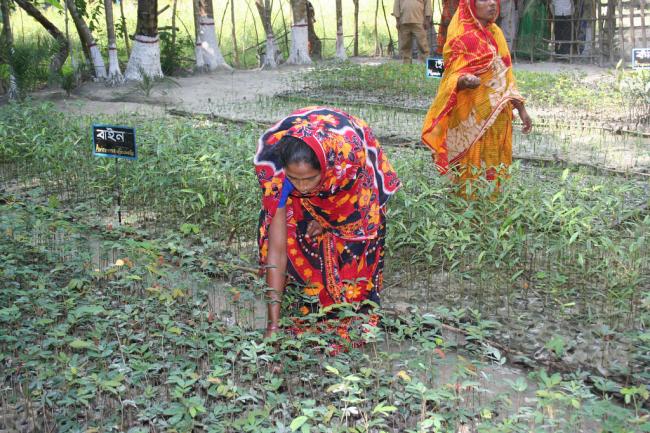
On first International Day, UNESCO calls for protection of mangrove ecosystems
“Mangroves are rare, spectacular and prolific ecosystems on the boundary between land and sea. They ensure food security for local communities. They provide biomass, forest products and sustain fisheries. They contribute to the protection of coastlines. They help mitigate the effects of climate change and extreme weather events,” said Irina Bokova, Director-General of the UN Educational, Scientific and Cultural Organization (UNESCO) in a message to mark the Day.
“This is why the protection of mangrove ecosystems is essential on Tuesday. Their survival faces serious challenges – from the alarming rise of the sea level and biodiversity that is increasingly endangered. The earth and humanity simply cannot afford to lose these vital ecosystems,” she added.
Mangroves – ecosystems located on the interface of land and sea in tropical regions – can play an important role in reducing vulnerability to natural hazards and increasing resilience to climate change impacts, by acting as a form of natural coastal defense. However, mangroves are disappearing three to five times faster than overall global forest losses, with serious ecological and socio-economic impacts, UNESCO said.
The proclamation of the International Day for the Conservation of the Mangrove Ecosystem – which was adopted in November 2015 by the General Conference of UNESCO – underlined the importance of the mangrove ecosystem as a “a unique, special and vulnerable ecosystem, providing by virtue of their existence, biomass and productivity substantial benefits to human beings, providing forestry, fishery goods and services as well as contributing to the protection of the coastline and being particularly relevant in terms of mitigation of the effects of climate change and food security for local communities.”
UNESCO noted that it has always been on the frontline of promoting new and harmonious relations between humanity and nature, where the preservation of mangrove ecosystems carries “special importance.” To this end, the agency is working with partners on an open initiative on mangroves and sustainable development.
“On this first International Day for the Conservation of the Mangrove Ecosystem, UNESCO's message is clear. Taking forward the 2030 Agenda for Sustainable Development means forging new sustainable pathways to development in harmony with the earth. This means preserving all mangrove ecosystems,” said Bokova.
UNESCO's World Network of Biosphere Reserves has 86 sites out of 669 that include areas of mangroves. Many are in developing countries and Small Island Developing States – such as La Hotte Biosphere Reserve in Haiti and the island of Principe in Sao Tome and Principe, as well as the Can Gio Mangrove in Viet Nam.
In addition, the UNESCO World Heritage List includes the Sundarbans, the largest unbroken mangrove system in the world, shared between Bangladesh and India and home to the iconic Royal Bengal Tiger.
The UNESCO Global Geoparks Network also has mangrove sites, such as the Langkawi Global Geopark of Malaysia.
Photo: UNDP
Source: www.justearthnews.com
Support Our Journalism
We cannot do without you.. your contribution supports unbiased journalism
IBNS is not driven by any ism- not wokeism, not racism, not skewed secularism, not hyper right-wing or left liberal ideals, nor by any hardline religious beliefs or hyper nationalism. We want to serve you good old objective news, as they are. We do not judge or preach. We let people decide for themselves. We only try to present factual and well-sourced news.







